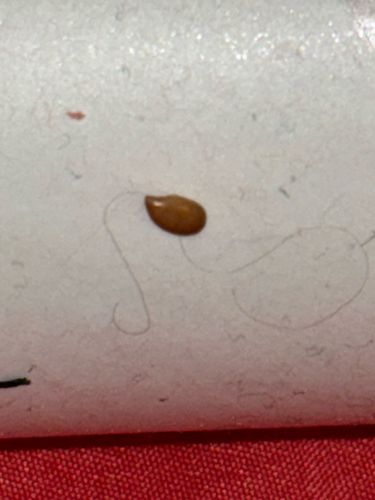Bed Bug (engorged)
Scientific Name: Cimex lectularius
Order & Family: Hemiptera, Cimicidae
Size: 4-5 mm (unfed adult), up to 7-8 mm (engorged adult)

Natural Habitat
Primarily nocturnal, found in human dwellings, especially in mattresses, bed frames, cracks in walls, and furniture. They prefer dark, secluded areas close to their human hosts.
Diet & Feeding
Exclusively feed on the blood of warm-blooded animals, primarily humans. They emerge at night to feed, typically biting exposed skin.
Behavior Patterns
Nocturnal feeders, they are attracted to carbon dioxide and body heat. They generally feed for 3-10 minutes before becoming engorged and then retreat to their hiding spots. Females lay 1-5 eggs per day, totaling hundreds in their lifetime. They undergo incomplete metamorphosis, with nymphs molting five times before reaching adulthood, each stage requiring a blood meal.
Risks & Benefits
Potential risks include itchy bites (cutaneous reactions), secondary skin infections from scratching, and allergic reactions in sensitive individuals. While they are not known to transmit diseases, their presence can cause significant mental distress, sleep deprivation, and financial burden due to eradication efforts. There are no known benefits.
Identified on: 9/15/2025